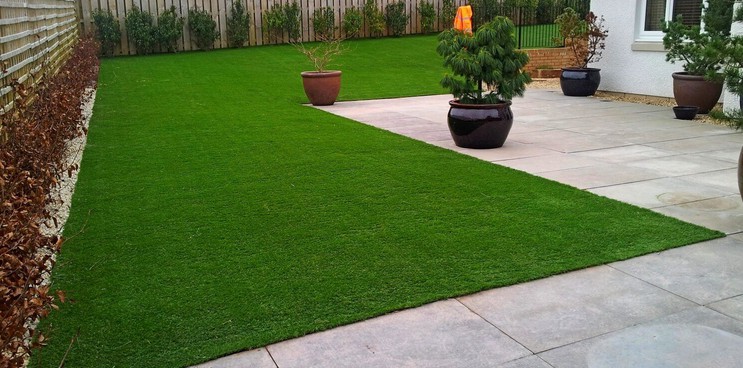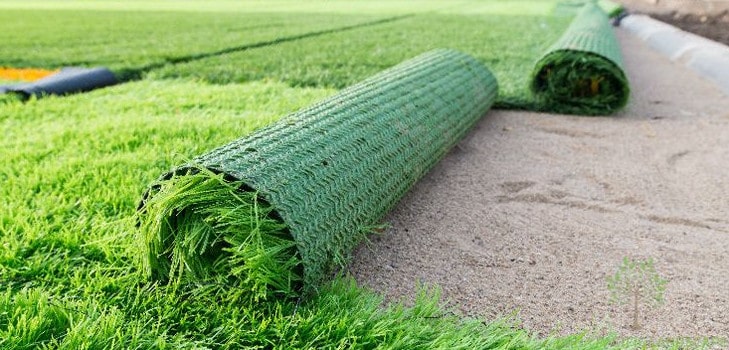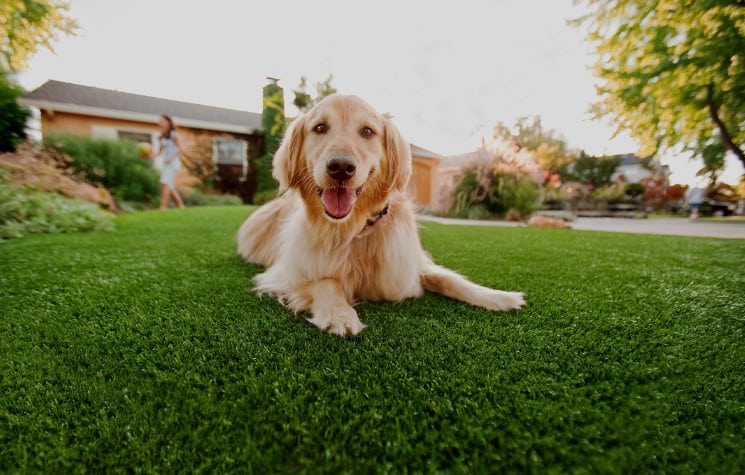If your lawn has artificial grass, and you are seeking for practical tips on how to maintain it, then you have landed on the right article.
You need to take care of the grass and maintain it to ensure that your backyard remains healthy and green for a long period of time.
Many homeowners in Sydney prefer this type of grass due to its ability of remaining healthy despite its minimal maintenance requirements. Nevertheless, you should sill take care of your lawn for it to last long, according to landscape architect Sydney services.

If you are a homeowner who has spent a lot of money on allergens and water costs, and also spent time sweating under the sun during summer just to groom natural grass, then you are aware of the challenges faced in maintaining natural grass.
Artificial turf comes in handy as grass which is easy to maintain, convenient, and maintains consistent beauty. However it still requires some care to ensure it retains its fresh look for years to come.
Although it is quite easy to take care of man made grass, here are some tips and details you need to know on how to maintain it.
The Unique Demands of Man-Made Grass
This grass has different threats to those of real grass. It also requires different maintenance procedures.
Artificial lawns are not susceptible to fungi, diseases and weeds, but they are prone to tear and wear when used in an area with high traffic.
They also have to batter from harsh weather elements. Being artificial does not mean that the grass won’t require your attention after installation. You need to take care of it to serve you for many years.
Maintenance Practices
Caring for this type of grass is a regular routine just like you do for your lawn. Grass is always exposed to elements and it’s frequented by pets and children, thus it will require some regular management practices to remove the stains left behind.
In the case of real grass, oil, pet, and food stains are eventually outgrown or mown away when trimming the grass. However, stains and spills on synthetic grass cannot go away on their own.
You need to resolve such problems manually to ensure that the grass maintains its feel and quality look throughout its lifespan. Here are some tips on maintaining and taking care of this grass.

Removing Mild Stains
There are many activities that are done on grass. As you enjoy a meal or a drink on your yard, a plate might fall on the ground or a beverage will get knocked over.
Your pet and toddlers might also leave some marks somewhere on the yard. Stains such as alcohol, cola, blood, tea, coffee, and urine among other such liquids are easy to clean. Here is what you need to know about removing mild stains on your grass:
- Always be prompt. You should clean up any spill as soon as it occurs. This will ensure that it will leave a stubborn stain. It will be easy to remove it quickly before it sticks on the grass and become harder to remove later.
- Dry the liquid off the spot it spilled using an absorbent materials such as a kitty litter or even a towel.
- Once you have dried the liquid spill, wash off that area immediately using a mild detergent and water mixture. Using a mild detergent won’t harm the grass fibers.
- In case you require a stronger solution to remove the stain, you can use an ammonia (3%) solution in water rather than a household detergent.
- Rinse thoroughly using clean water.
Removing Stubborn Stains
Spills such as grease, motor oil, pen ink, suntan oil, crayon marks, and cooking oil tend to be quite stubborn to remove from grass than the aforementioned liquids.
If the stain fails to respond to a mild household detergent or even an ammonia solution, then try using stronger stain removers such as a mineral spirit to remove the stubborn stain.
The process of removing stains when using mineral spirits is similar to that of removing mild stains.
Removing Really Sticky Substances
Chewing gum and tree sap may also find its way onto the grass and get stuck. This may sound scary in case it happens.
Luckily, it is not difficult to remove such substances. You can use aerosol refrigerants or dry ice to freeze chewing gum or tree sap off. Then you can remove it from the grass with ease once it freezes.

Removing Your Pet’s Waste
If you have pets in your home, it does not mean you have to clean the grass constantly. Cleaning up pet waste isn’t really hard. All you need to do is:
- Allow for solid pet waste to settle and dry off before you make any attempts of removing it off the grass.
- The grass may drain most of the liquid waste. However, some stench may be left behind. In such instances, douse the urine spots with some cool water using a hose.
Most of the stains that often fall on this type of grass are not too difficult to remove. However, this does not mean that you should be careless with your turf. Always be cautious and avoid staining it.
You never know when a stain might end up damaging your turf by leaving permanent unsightly spots. Hence, always keep away liquids that may stain the turf.
Also keep fireworks and cigarettes off the grass since burns would be irreparable. Avoid using harsh chemicals around the grass as they may cause permanent damage.
You Might Be Interested In:
A Guide for Designing a Friendly Backyard for Your Dog
Maintaining the Grass to Last Long
Besides the daily tear, wear, and accidents, you should also follow a routine maintenance practice to ensure its quality is maintained for it to last long. Generally, artificial turf lasts for around 15-25 years.
If you follow maintain it regularly by clearing debris, rinsing it, and brushing it, then it can last for its lifespan. Failing to observe such a simple maintenance routine will reduce the lifespan of the grass.
The Equipment Needed
Routine care and maintenance of your grass requires you to have some essential tools and equipment. One of the most important equipment you will need is a hose.
In case you live in an area that receives rainfall frequently, then a hose will not be a top priority tool, but it will still assist you when rinsing your grass as needed.
You will also need a leaf blowing equipment or lawn vacuum to eliminate fallen leaves. You should remove fallen leaves regularly to ensure that they won’t rot on the grass and make it dirty. A rake is also useful for keeping the grass fibers fresh.
However, avoid using a rake that has metallic bristles since it can damage the grass fibers. It is advisable to use a rake with plastic or synthetic bristles for they are gentler on the fibers.
Clean, Rinse, then Brush and Repeat
Cleaning, rinsing, brushing and repeating are the four key steps involved in maintaining grass. This should be done regularly such as on a monthly basis in case you do not have time to do it weekly.
Here are more details about these steps.
- Remove any debris off the grass. Debris tends to collect on the lawn especially after a thunderstorm or strong winds. Removing branches, leaves and any other such debris will keep your grass protected from damage.
- Always rinse the grass on a regular basis. You can simply remove pollen and dust off the grass using a hosepipe with clean water. In case your area of residence rains quite often, then you will not have to keep on rinsing your turf often.
- Take some time to brush the turf especially around the areas that get high traffic. Brushing it regularly will make it matted and ensure it always looks fresh and strong.
Conclusion
Artificial turf is a worthy investment. It requires maintenance and care just like any other investment. Maintaining and caring for your grass ensures that it will maintain its optimal shape and look.
All you need to do is following these practical tips for removing stains and cleaning the grass by ensuring it is kept free of debris, rinsed on a regular basis, and brushed around the areas that experience high traffic.
These simple maintenance practices will obviously pay off by giving you a beautiful backyard in Sydney with synthetic grass.
Contact NBG Landscapes to learn more about our garden maintenance services in Sydney.
